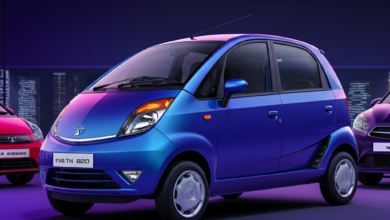D.Va is Transgender? Representation, Fan Support, and its Impact

Representation matters. Whether it’s in films, TV shows, or video games, seeing yourself reflected in media can foster identity, validate experiences, and build a sense of belonging. Within the gaming world, one fan theory has ignited conversations about representation and inclusivity—D.Va, one of the most iconic characters in Blizzard’s Overwatch, as transgender.
This blog explores the fan theories surrounding D.Va’s gender identity, offers insights from the community, and examines the broader implications of transgender representation in gaming. Whether you’re an advocate for LGBTQ+ visibility or a fan curious about this theory, there’s plenty to unpack.
Who is D.Va?
For anyone unfamiliar, D.Va (real name Hana Song) is a celebrated character in Overwatch, Blizzard Entertainment’s immensely popular team-based multiplayer shooter. D.Va is a former professional gamer turned mech pilot, defending her homeland of South Korea with unmatched skill. Known for her confidence, fierce wit, and iconic pink mech, she’s a favorite among fans and transcends gaming as a pop-culture icon.
A Brief Overview: Transgender Representation in Media
Transgender representation in any media is still in its infancy, especially compared to other forms of LGBTQ+ inclusivity. While we’re seeing more trans individuals represented in popular TV shows (Pose, Euphoria, Orange Is the New Black), the gaming industry has been slower to integrate realistic and meaningful transgender characters.
Historically, trans representation has often leaned into harmful stereotypes, sidelining authentic narratives. However, progress is being made. Characters like Tyler Ronan from Tell Me Why and Krem from Dragon Age have begun to pave the way for richer, more respectful trans stories.
But what about characters whose identities are read into by fans? That brings us to D.Va.
The Theory: “D.Va is Trans LMFAO”
The phrase “D.Va is trans lmfao” has become a rallying cry for fans who believe Hana Song could (or should) be a transgender character. While it may have started as a tongue-in-cheek meme or hypothesis, its staying power within LGBTQ+ gaming circles highlights just how much traction this idea has gained.
Here’s why the theory resonates with fans:
- Representation Matters – Many fans simply want a trans character as iconic as D.Va. They resonate with her underdog spirit and tenacity and see a bit of themselves in her storyline.
- The Power of Headcanon – Fandom thrives on interpretation. Beyond what’s written or explicitly stated about a character, fans have the agency to create what feels meaningful to them, leading to widespread “headcanons” like D.Va’s trans identity.
- Community Support – This theory has been warmly embraced by the broader Overwatch and LGBTQ+ communities online, creating artwork and stories depicting D.Va as a trans woman. Platforms like Tumblr and Twitter have served as hubs for these creative expressions.
What Do Blizzard and Developers Say?
While there’s no official statement from Blizzard supporting the theory that D.Va is transgender, it’s important to recognize the ways developers engage with their audience. Blizzard has encouraged inclusivity within Overwatch with canonically queer characters like Tracer and Soldier: 76. However, the lack of explicit trans representation leaves a gap that fans have been eager to fill.
The potential for developers to lean into conversations like these often depends on how vocal and united the fanbase is. Developers frequently respond to community movements when they gain sufficient momentum. Could D.Va’s fan-driven trans identity become a future creative direction? Only time will tell.
Why This Theory is Important
1. Community Validation
For many transgender individuals, gaming offers a space for self-expression, identity exploration, and finding like-minded individuals. Headcanons like “D.Va is trans” act as a form of validation for people who rarely see themselves in mainstream media.
2. Challenging the Status Quo
The passionate support behind D.Va’s trans identity challenges what many perceive as “default” storylines for characters in games, which often exclude diverse perspectives. The LGBTQ+ gaming community thrives on pushing boundaries and creating narratives that reflect the realities of their players.
3. Highlighting the Need for More Trans Representation
Even if Blizzard does not affirm this theory, the fervor underscores the need for broader transgender representation in gaming. Fans crave authentic, multidimensional trans characters—not tokenism or stereotypes.
The Impact of Transgender Characters in Media
When done well, trans representation in media can have seismic positive effects. Here’s why having transgender characters like D.Va matters:
- Normalize Trans Experiences – Familiarizing audiences with trans identities fosters empathy and understanding.
- Visibility and Belonging – Seeing themselves in games may empower trans individuals to feel seen and valued in a world that often overlooks them.
- Changing Perceptions of Gamers – Stereotypes of gamers as cis men are outdated. A trans D.Va reflects the diversity of the modern gaming community.
What Advocates are Saying
Transgender advocates emphasize that media representation isn’t just about entertainment—it’s about systemic change. “Characters like D.Va, who hold massive cultural weight, represent an opportunity to normalize conversations about gender identity,” says Jessica Nguyen, a trans gaming advocate. “Even suggesting she’s trans opens the door for dialogue and helps tear down harmful stigmas.”
Meanwhile, others call for caution. “We need authentic representation,” adds Raj Patel, a community leader for Queer Gamers Initiative. “Token gestures or vague allusions aren’t enough. Studio accountability is what we’re aiming for here.”
What We Can Learn From the “D.Va is Trans LMFAO” Movement
Even if Blizzard never makes D.Va’s gender identity canon, this movement has already demonstrated the power of fan initiatives in shaping discussions around representation in gaming. From artwork to forum discussions, one thing is clear—people are hungry for media that reflects the beautifully diverse spectrum of human identity.
Game developers should take notes. Community-driven passion and support for ideas like this don’t just enhance player experiences; they build trust, foster inclusivity, and create a new industry standard for how diverse characters can and should be handled.
A Call For Action (and Celebration)
The “D.Va is trans lmfao” theory is more than just a meme—it’s a movement. A community-driven spotlight on the ongoing need for better transgender representation in gaming. It shows us how fandom and advocacy can intersect to spark change in one of the world’s most influential industries.
Now it’s your turn. Whether you’re a fan of D.Va or passionate about trans inclusion in gaming, make your voice heard. Share art. Write stories. Start conversations. And, above all, support creators and studios advocating for authentic representation.



